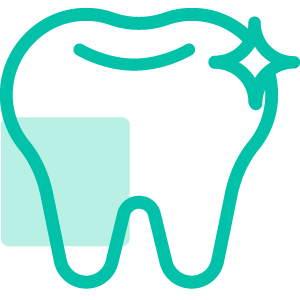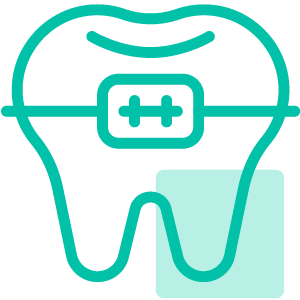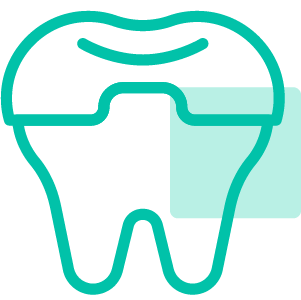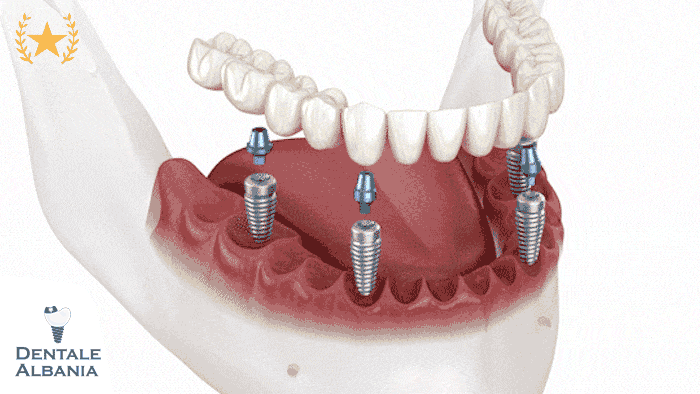What Is Preventive Dentistry?
Preventive dentistry is a modern approach to oral care that focuses on avoiding dental problems before they occur. Rather than waiting for cavities, gum disease, or enamel erosion to develop, preventive dentistry emphasizes the importance of daily oral hygiene habits and regular professional checkups to maintain healthy teeth and gums for life.
At its core, preventive dentistry is a collaboration between you and your dental team. It begins with simple habits at home—such as brushing your teeth twice a day, flossing daily, and maintaining a balanced diet—but it also includes routine dental visits for professional cleanings, oral exams, and early diagnostic procedures like X-rays. These combined efforts help catch issues in their early stages or prevent them altogether.
Preventive dentistry reduces the risk of the most common dental issues, including:
- Cavities (dental caries): These are caused by plaque bacteria that produce acids from sugar, leading to tooth decay.
- Gum disease (gingivitis and periodontitis): Inflammation of the gums that, if left untreated, can result in tooth loss.
- Enamel erosion: Often caused by acidic foods and drinks, which wear down the outer surface of teeth.
- Tooth sensitivity and bad breath: Both are commonly linked to poor oral hygiene and gum health.
By incorporating preventive dental care into your routine, you can save yourself from painful treatments like root canals or extractions. Even more importantly, you’re protecting your overall health, as poor oral hygiene has been linked to systemic conditions such as heart disease, diabetes, and respiratory infections.
Preventive dentistry is especially vital for children, helping them build strong, healthy teeth as they grow. However, it’s never too late to begin—adults and seniors can also benefit significantly from preventive measures that preserve natural teeth and avoid prosthetics like dentures or implants.
From the dental clinic to your home bathroom mirror, preventive dentistry bridges the gap between daily care and professional guidance, offering a complete strategy to protect your smile for the long haul.
What Is the Goal of Preventive Dentistry?
The primary goal of preventive dentistry is simple yet powerful: to help you maintain your natural teeth and avoid dental problems before they start. This forward-thinking approach saves not only your teeth but also your time, comfort, and money.
Rather than waiting for toothaches, infections, or gum disease to arise, preventive dentistry works to ensure that these issues never develop—or if they do, that they are detected and treated as early as possible. This is done through a combination of regular dental visits, proper oral hygiene habits at home, and healthy lifestyle choices.
Here are the core goals of preventive dentistry:
- Maintain healthy natural teeth for life
Keeping your original teeth intact is always better than replacing them. Preventive measures help avoid tooth loss, which can lead to more serious issues like bone loss in the jaw and difficulty eating or speaking. - Reduce the need for expensive or invasive treatments
Catching problems early through routine checkups and hygiene cleanings prevents the need for costly procedures such as root canals, crowns, implants, or dentures. A small cavity can be treated with a simple filling—if it’s spotted early. - Minimize discomfort and dental emergencies
Preventive care dramatically lowers the chances of experiencing painful dental emergencies. Conditions like abscesses or broken teeth are often the result of neglected oral health over time. - Promote long-term savings
Preventive appointments—typically covered by dental insurance—are far less expensive than restorative treatments. Investing in prevention today helps you avoid large bills in the future. - Support overall health
Preventive dental care isn’t just about your mouth. There’s a strong connection between oral and general health. Conditions like diabetes, cardiovascular disease, and respiratory illnesses have been linked to poor dental hygiene. Keeping your mouth clean helps support your whole body.
Ultimately, preventive dentistry empowers you to take charge of your oral health. Through simple daily actions and consistent checkups, you can enjoy a lifetime of strong, healthy teeth—and that’s the best dental outcome anyone can hope for.
What Are the Different Types and Levels of Preventive Dentistry?

Preventive dentistry is a multi-layered approach to protecting your teeth and gums from damage. It combines various strategies, procedures, and lifestyle habits that are designed to stop oral health issues at different stages of development.
Let’s break this down by looking at the three levels of prevention in dentistry and the types of preventive methods used across professional care and daily routines.
What Are the Three Levels of Prevention in Dentistry?
Preventive dentistry can be categorized into three key levels, each with its own purpose:
- Primary Prevention
This is the first line of defense. It includes all measures taken to prevent dental diseases before they begin. Examples include:- Brushing with fluoride toothpaste
- Flossing daily
- Using mouthwash
- Professional fluoride treatments
- Sealants for children’s molars
- Healthy diet and sugar reduction
- Secondary Prevention
This involves identifying and treating issues at an early stage, before they progress into more serious conditions. Examples include:- Routine dental checkups
- Early cavity detection through X-rays
- Minor fillings
- Scaling and polishing to reverse early gum disease
- Tertiary Prevention
When damage has already occurred, tertiary prevention helps minimize the impact and restore functionality. Though more restorative in nature, it still falls under the umbrella of prevention by halting further deterioration. Examples include:- Deep cleanings (for advanced gum disease)
- Crowns to protect weakened teeth
- Root planing
- Maintenance therapies post-treatment
Understanding these levels helps patients recognize that prevention isn’t just about brushing—it’s a full spectrum of care that evolves with your oral health needs.
What Are the Types of Prevention in Dentistry?
Preventive dentistry also includes several types of methods, each targeting different risk factors:
- Mechanical Prevention
Brushing, flossing, and using interdental brushes to physically remove plaque and food debris. - Chemical Prevention
Use of fluoride toothpaste, antibacterial mouthwash, and prescription-strength fluoride gels or rinses to strengthen enamel and reduce bacterial load. - Dietary Prevention
Avoiding sugary snacks and acidic drinks that contribute to tooth decay and enamel erosion. Encouraging a nutrient-rich diet that supports gum and tooth health. - Behavioral Prevention
Establishing good oral hygiene routines, quitting smoking, moderating alcohol, and scheduling regular dental visits. This includes educating children early to build lifelong healthy habits.
These types of prevention are interconnected, and together they form a robust defense system against oral disease. Whether you’re brushing at home or getting sealants applied at the clinic, every preventive step counts.
How Does Preventive Dentistry Compare to Restorative Treatments?
When it comes to oral health, there are two major paths: prevention and restoration. While both play a role in dental care, they serve very different purposes. Understanding how they compare can help you make smarter choices that protect your smile and your wallet.
What Is the Difference Between Prevention and Treatment in Dentistry?
Preventive dentistry focuses on stopping problems before they start. It includes regular cleanings, oral hygiene education, dietary advice, fluoride treatments, and early detection checkups. The goal is to maintain healthy teeth and gums, avoiding pain, complications, and high-cost procedures.
Restorative dentistry, on the other hand, fixes damage that has already occurred. This includes:
- Fillings
- Root canals
- Crowns
- Bridges
- Implants
- Dentures
Here’s the key difference:
Prevention is proactive. Treatment is reactive.
Catching a small cavity early might just require a fluoride varnish or sealant. But ignoring it can lead to root canal therapy or even extraction.
From a financial perspective, the cost of routine preventive care is minimal compared to the complex procedures required for neglected dental issues. A 20-minute hygienist appointment can prevent a £1000 crown.
Are Fillings Preventive or Restorative?
This is a common point of confusion. In most cases, fillings are considered restorative because they are used to repair a tooth after decay has occurred. However, there are exceptions.
If a filling is recommended on a cracked or weakened tooth that hasn’t yet decayed, it may be acting as a preventive measure—strengthening the tooth to stop future damage. Similarly, preventive resin restorations (PRRs) can seal small defects in enamel before a full cavity develops.
The key takeaway? Whether a procedure is preventive or restorative often depends on timing. The earlier an issue is addressed, the more likely it can be managed with minimally invasive techniques that preserve the natural tooth structure.
What Are the Most Effective Daily Habits for Preventive Dentistry?

Preventive dentistry doesn’t start at the clinic—it starts at home. Your daily habits are the foundation of good oral health, and small, consistent actions can have a major impact on preventing decay, gum disease, and even tooth loss.
Here’s how to take charge of your smile every single day.
What Can Patients Do Daily to Remove Plaque?
Plaque is a sticky film of bacteria that forms on your teeth and gums. Left unchecked, it leads to cavities and gum disease. Here’s how to keep it under control:
- Brush twice a day with fluoride toothpaste
Use a soft-bristled brush and gently clean all surfaces of your teeth for at least two minutes. Fluoride strengthens enamel and helps reverse early decay. - Use interdental brushes or dental floss daily
Brushing alone only reaches around 60% of your tooth surfaces. Floss or interdental brushes help remove plaque and food particles from between teeth and under the gumline—where most cavities and gum problems begin. - Include mouthwash in your routine
Antibacterial mouthwashes reduce bacteria and inflammation, while fluoride rinses provide added protection against decay. Use it at a separate time from brushing for longer-lasting effects. - Spit, don’t rinse
After brushing, spit out the toothpaste but don’t rinse with water. This helps fluoride remain on your teeth longer for better protection.
What Oral Care Products Should I Use?
Using the right products is just as important as technique. Here’s what your dentist would recommend:
- Toothbrush:
Choose a soft- or medium-bristled brush with a small head to reach all areas. Electric toothbrushes with oscillating heads are proven to remove more plaque than manual ones. - Toothpaste:
Use one that contains 1350–1500 ppm of fluoride. There are also options tailored to sensitive teeth, gum disease, or whitening needs—ask your dentist what’s best for you. - Floss and interdental brushes:
These are essential for cleaning between teeth. Choose the right size of interdental brush to avoid damaging your gums. - Mouthwash:
Pick one with antibacterial or fluoride properties, especially if you’re at risk for gum disease or cavities. - Sugar-free gum (optional):
Chewing sugar-free gum after meals can stimulate saliva and help neutralize acid attacks—especially useful if you can’t brush right away.
By committing to these daily routines and using quality products, you’ll drastically reduce your chances of developing preventable dental conditions—and make your next dental check-up a breeze.
Why Is Oral Hygiene So Important for Preventive Dental Care?
Oral hygiene is the cornerstone of preventive dentistry. Without consistent hygiene habits, even the most advanced treatments or check-ups won’t be enough to stop decay and disease from developing. Poor mouth hygiene is the root cause of most dental issues—making its role in prevention absolutely essential.
What Is Oral Health and Hygiene?
Oral health is more than just having clean teeth—it’s about maintaining the overall condition of your mouth, including the gums, tongue, inner cheeks, and jaw. Oral hygiene is the set of practices that keeps this system clean and functional.
Let’s break this down:
- Oral hygiene includes:
Brushing, flossing, rinsing with mouthwash, tongue cleaning, and regular dental visits. - Oral health means:
A mouth free from pain, infection, sores, decay, bad breath, or tooth loss.
Poor oral hygiene can lead to:
- Cavities
- Gum disease (gingivitis and periodontitis)
- Dental abscesses
- Enamel erosion
- Bad breath
- Tooth loss
- Increased risk of systemic issues like diabetes and heart disease
Why Is Dental Hygiene Important?
Here’s why maintaining great oral hygiene is one of the most effective forms of prevention:
- Stops plaque buildup: Brushing and flossing remove harmful bacteria before they cause decay or gum inflammation.
- Reduces need for treatment: Good hygiene significantly decreases your risk of needing fillings, root canals, or extractions.
- Protects your enamel: Daily fluoride use keeps enamel strong and resistant to acids and sugars.
- Improves breath: A clean mouth has fewer bacteria, leading to fresher breath and greater confidence.
- Boosts general health: Infections in your mouth can spread to the rest of your body. Healthy gums support a healthier immune system.
Hygiene isn’t just for appearances—it’s a daily defense system. The better you care for your mouth, the longer you’ll keep your natural teeth and avoid expensive treatments.
What Are the Most Common Preventive Dentistry Procedures?

Preventive dentistry isn’t just about brushing at home—it also includes a wide range of professional procedures that protect your oral health. These treatments help detect issues early, prevent them from worsening, and support long-term dental wellness.
What Are Some Common Preventive Dental Procedures?
Here are the most widely used in-clinic procedures designed to prevent dental problems before they start:
- Dental Exams
Regular check-ups allow dentists to spot signs of cavities, gum disease, enamel erosion, and even oral cancer early. These visits are recommended every 6 months. - Professional Cleanings
Hygienists remove plaque and tartar from hard-to-reach areas with scaling and polishing tools. This helps prevent gum inflammation, tooth decay, and bad breath. - Fluoride Treatments
Fluoride strengthens enamel and makes teeth more resistant to decay. It’s especially helpful for children and those prone to cavities. - Dental Sealants
A thin protective layer applied to the chewing surfaces of molars, sealants protect against bacteria that can settle into grooves and cause decay. They’re commonly used for children but also beneficial for adults. - X-Rays and Intraoral Scans
These diagnostic tools reveal issues not visible during visual exams—such as cavities between teeth, infections, or bone loss. - Orthodontic Referrals
In children and teens, early signs of misalignment may be caught during checkups, leading to timely orthodontic intervention.
What Are Preventive Dental Material Examples?
Specific materials and tools play a key role in preventive dental care:
- Fluoride Varnish
A sticky gel applied directly to teeth that helps mineralize enamel and stop early decay. - Dental Sealants
Resin-based coatings used to seal grooves in molars and premolars. - Mouthguards
Custom-fitted devices used to protect teeth during sports or reduce grinding (bruxism) at night. - Antibacterial Agents
Chlorhexidine mouth rinses or gels used for patients with gum disease to control bacteria. - Interdental Tools
Specialized floss, brushes, or rubber picks designed to clean between teeth effectively.
These procedures and materials, when combined with good daily habits, create a comprehensive strategy for preventing oral diseases and maintaining a healthy smile at any age.
How Much Can Preventive Dentistry Save You?
Preventive dentistry isn’t just good for your health — it’s good for your wallet too. Many people underestimate how much time, money, and discomfort they can save simply by staying ahead of dental problems.
Is Prevention Better Than Treatment?
Absolutely — and not just in theory. Here’s why prevention always wins:
- Lower costs over time
Regular cleanings and checkups might cost £50–£100 every six months, but skipping them could result in needing a £500+ crown or a £1,000+ root canal. - Avoiding painful emergencies
Preventive care helps catch small problems early, avoiding emergency dental visits due to abscesses, severe infections, or broken teeth. - Minimally invasive care
Treating an early cavity is quick and easy. Waiting too long might mean needing a root canal or extraction. - Better health, fewer complications
Preventive care lowers your risk for complications from diabetes, heart disease, and even premature birth in pregnant women — all linked to poor oral health.
Real-world example: The NHS recommends regular exams and hygiene appointments to avoid invasive treatment. In the U.S., the ADA estimates that every $1 spent on prevention can save up to $50 on restorative care.
Is Preventive Dentistry Expensive?
No — especially when compared to restorative procedures. Here’s what you should know:
- Covered by most dental insurance plans
Preventive services like exams, cleanings, X-rays, and fluoride are often fully or mostly covered by insurance providers. - Affordable without insurance
Many clinics offer low-cost hygiene plans or payment packages to make preventive care accessible. Some even include emergency care as part of their plan. - Long-term savings
Investing in prevention avoids costly treatments like crowns, implants, or dentures later in life — often saving thousands over the years.
In short: preventive dentistry is the smartest financial decision you can make for your oral health.
Who Benefits Most from Preventive Dentistry?

Preventive dentistry is universal. Everyone — from toddlers to seniors — can benefit from a consistent approach to oral care. But the reasons and advantages vary depending on age, health status, and dental history.
Here’s who benefits and why:
- Children and Teenagers
Starting preventive care early teaches lifelong habits. Regular check-ups, fluoride treatments, and sealants help protect their developing teeth and reduce fear of dentists later on. Orthodontic issues can also be identified and corrected early. - Adults
For busy adults, preventive care means avoiding expensive treatments that interfere with work and family life. It helps maintain a clean smile, keeps dental work (like crowns or fillings) in good condition, and prevents tooth sensitivity or decay. - Seniors
Older adults benefit by maintaining their natural teeth for longer, avoiding the cost and hassle of dentures or implants. Preventive check-ups also help manage dry mouth (common with medications), and screen for serious issues like oral cancer or gum recession.
Link Between Oral Health and Overall Health
Preventive dental care isn’t just about your teeth. Your mouth is a gateway to your body — and poor oral hygiene has been linked to serious health issues, including:
- Heart disease
- Diabetes
- Respiratory infections
- Stroke
- Pregnancy complications (low birth weight, preterm birth)
That’s why dentists often say: “Healthy mouth, healthy body.”
Preventive dentistry also promotes mental well-being — a healthy, pain-free, and confident smile can boost your self-esteem and social interactions at every age.
In summary: whether you’re trying to avoid cavities, keep your gums healthy, or stay out of the dentist’s chair, preventive care is the best strategy for a healthier, longer-lasting smile.
What’s Your Role in Preventive Dental Care?
Your dentist and hygienist play a vital part in your oral health — but the real MVP is you. Preventive dentistry is a shared responsibility, and what you do daily matters just as much (if not more) than what happens during checkups.
What Is My Role in Preventive Dental Care?
Here’s how you can take charge of your dental health:
- Be consistent with daily care
Brush twice a day with fluoride toothpaste, floss daily, and use a dentist-recommended mouthwash. These basic habits remove plaque and food debris — preventing most common issues. - Don’t skip appointments
Even if your teeth feel fine, regular checkups are essential for spotting problems early. Many dental conditions (like early gum disease or enamel erosion) don’t hurt until they’re advanced. - Monitor changes
Pay attention to bleeding gums, sensitivity, sores that don’t heal, or bad breath — they may signal an underlying problem. - Choose the right products
Use a soft-bristle or electric toothbrush, fluoride toothpaste, and floss or interdental brushes. Your dentist can recommend products tailored to your needs. - Adopt supportive habits
Eat a balanced diet, reduce sugar intake, drink plenty of water, and avoid tobacco. These lifestyle choices have a direct impact on your oral and overall health. - Set an example for your family
If you’re a parent or caregiver, your habits influence your children. Make oral hygiene a shared daily routine to build good habits early on.
Ultimately, your role is about being proactive — not reactive. When you take ownership of your oral health, you significantly reduce your risk of needing fillings, extractions, root canals, or implants in the future.
Frequently Asked Questions About Preventive Dentistry

What Is the Primary Goal of Preventive Dentistry?
The core mission of preventive dentistry is simple yet powerful: to help you keep your natural teeth healthy for life. But what does that truly involve? Let’s break it down:
- Prevent, not repair
The goal isn’t to wait for a cavity or gum infection to happen and then fix it. Preventive dentistry stops problems from developing in the first place — saving you time, money, and discomfort. - Maintain strong, functional teeth
Strong teeth aren’t just for smiling. They’re essential for chewing, speaking, and your overall facial structure. Preventive care ensures your teeth stay healthy and functional throughout your life. - Avoid complex, costly treatments
Fillings, root canals, crowns, and implants are expensive and invasive. The ultimate goal of prevention is to avoid the need for these treatments entirely — or at least reduce their frequency. - Preserve gum and bone health
Healthy gums are the foundation of your teeth. Preventive care reduces inflammation and infection, which can otherwise lead to gum recession and bone loss. - Promote overall health
Oral health is directly linked to conditions like diabetes, cardiovascular disease, and respiratory infections. Keeping your mouth healthy plays a major role in protecting your body as a whole. - Educate and empower patients
Another critical aim of preventive dentistry is to educate you. When you understand how to care for your teeth properly, you’re empowered to make decisions that protect your long-term oral health.
In essence, the primary goal of preventive dentistry is long-term preservation — of your natural teeth, your smile, your comfort, and your health.
What Can Patients Do Daily to Remove Plaque?
Plaque is the invisible enemy of your teeth and gums. It’s a sticky film of bacteria that forms on your teeth throughout the day — and if not removed, it can lead to tooth decay, gum disease, and even tooth loss. The good news? You have the power to fight it every single day.
Here’s what you can do:
- Brush twice a day — the right way
Use a soft-bristled or electric toothbrush and fluoride toothpaste. Brush for two full minutes, reaching all surfaces — front, back, and chewing areas. Pay special attention to the gumline, where plaque loves to build up. - Floss daily
Brushing only cleans about 60% of your tooth surface. Flossing removes plaque and food particles from between your teeth and under the gumline, where a toothbrush can’t reach. - Use interdental brushes or soft picks
If floss is tricky or uncomfortable, especially around dental work or wide gaps, try interdental brushes. They’re great at sweeping out hidden debris and breaking up plaque colonies. - Rinse with mouthwash
Use an antimicrobial or fluoride mouthwash as part of your daily routine. This helps reduce bacteria, freshens breath, and offers added protection against plaque and gum inflammation. - Watch your diet
Sugary and starchy foods feed the bacteria in plaque. Limiting sweets, avoiding acidic snacks, and staying hydrated helps reduce plaque formation and supports healthy saliva flow. - Stay consistent with checkups
Even with perfect habits at home, plaque can harden into tartar — which only a dentist or hygienist can remove. Regular professional cleanings help keep your plaque levels in check.
In short, removing plaque is all about consistency. Small daily habits — done properly — are your strongest defense against dental problems.








